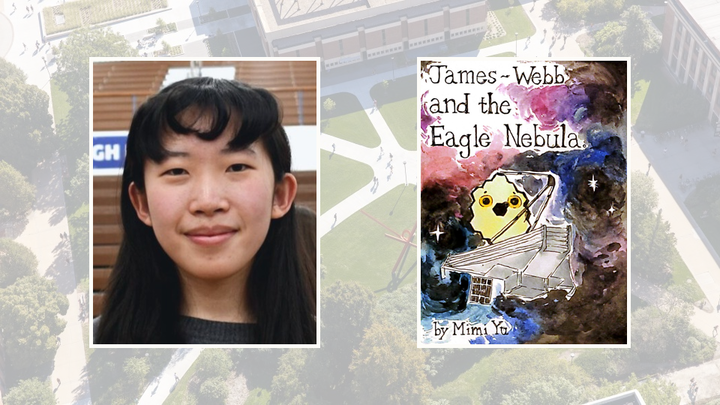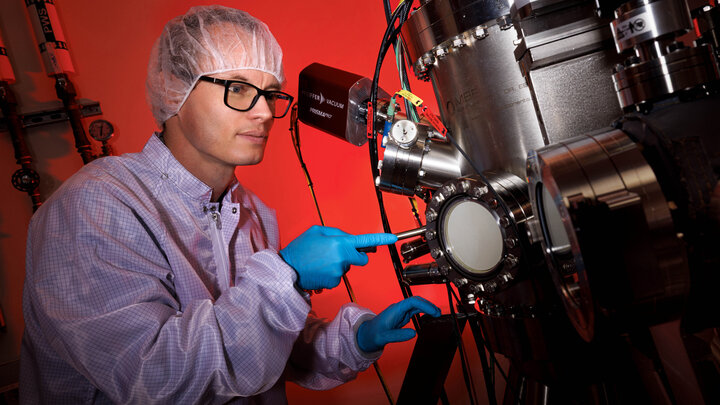Mimi Yu, an undergraduate Honors student majoring in English (minor in Art), created a children's book called "James Webb and the Eagle Nebula", a story about the James Webb Space Telescope (JWST).
Page from James Webb and the Eagle Nebula. Click to enlarge.
Explain the project: What program or class was it for? What was the direction you were given? Who was the instructor?
This project was for my Descriptive Astronomy (103H) course led by Dr. Kevin Lee. To receive my H credit for the class, I had to complete one honors project, which we were given a lot of creative liberty in terms of what we wanted the project to explore and what form it would be, as long as it took from what we were learning in class. In the past, there have been people who wrote papers, made board games, etc.
Page from James Webb and the Eagle Nebula. Click to enlarge.
How did you come up with this idea for your project? What about JWST is the most intriguing to you?
I was intrigued by JWST after it was presented by a speaker named Yoni Brande from the University of Kansas, and it was the first time that I really got to know the different telescopes and the different lenses they used to observe space. What's particularly interesting about JWST is that with infrared light, and the sheer amount of power it has, it can see the beginning of the big bang. I knew that for the project I wanted to write a children's book, and a part of the idea of personifying JWST came from Wall-E and the children's book Curiosity: The Story of a Mars Rover.
Page from James Webb and the Eagle Nebula. Click to enlarge.
Professor Lee mentioned that we will hear about JWST in the news as “first light” approaches. What does “first light” mean in this case?
I'm pretty sure that "first light" is when JWST has observed the early universe, I believe decade billion years ago, which is what it's mainly meant to do. Its predecessor, Spitzer, was designed for similar reasons, but it's been said that JWST is 100 times stronger.
Page from James Webb and the Eagle Nebula. Click to enlarge.
What are the potential benefits of the project?
Similar to the book I had mentioned above, my project can be used to inspire inquisitive young minds to explore the possibilities of space exploration through storytelling.
Page from James Webb and the Eagle Nebula. Click to enlarge.
What grade/age is the book you created for?
While the illustrated book is geared towards kids in their elementary years, it can be useful information for any age.
In James Webb and the Eagle Nebula, handmade watercolor illustrations depict a personified version of the James-Webb Space Telescope and the Hubble Space Telescope as they talk about how they were created and why. The humanization of these instruments will allow a more endearing attachment to the potentials of space observation.




